#NNPA BlackPress
Bill Cosby Denied Appeal, But Other Avenues to Freedom Remain
NNPA NEWSWIRE — “In my view, the case law which the Superior Court followed in this case does not adequately recognize the overwhelming, prejudicial effect of this type of evidence and the way in which it makes it incredibly difficult to obtain a fair trial on the actual allegations in question,” says Philadelphia-based criminal appeals attorney, Zak Goldstein.
By Zak Goldstein, Special to NNPA Newswire
@ZakTGoldstein
Bill Cosby, who in 2018 was convicted and sentenced to prison on aggravated indecent assault charges, has lost his bid for an appeal to the Pennsylvania Superior Court.
Zak Goldstein, an attorney who specializes in criminal defense appeals in Pennsylvania, told NNPA Newswire that the court’s denial of Cosby isn’t the last hurrah for the actor and comedian.
Goldstein, who does not represent Cosby, outlines what’s next for Cosby and his team. ~ Editors
Unfortunately, the majority of criminal appeals in Pennsylvania are denied by the Superior Court – meaning it is relatively rare for them to reverse a criminal defendant’s conviction or sentence.
In my experience, this seems to hold true whether the case was a high-profile case or not.
It happens, but the error committed by the trial court has to be significant AND preserved by the trial attorney, meaning the trial attorney must have made a timely objection at the time that the error occurred.
The case law directs the Superior Court to provide a great deal of deference to the rulings of the trial judge for most evidentiary issues.
For example, the issue of whether the other accusers who were not actually part of the case should have been allowed to testify is an issue where the Superior Court applies an “abuse of discretion standard.”
This means that they will not review the issue for whether they would have admitted the evidence themselves if they were initially making the ruling, but instead they look at whether it was unreasonable for the trial judge to make that ruling.
Unless the judge was clearly wrong, they are not going to reverse the conviction for that reason.
With respect to prior bad acts evidence, such as these other accusers, trial courts often let this type of evidence in where the Commonwealth can show that the allegations were similar or somewhat similar to the allegations in the current case, and the appellate courts usually approve of this.
It then becomes incredibly difficult to obtain a fair trial as this type of propensity evidence is overwhelmingly prejudicial.
This is particularly true in cases involving sex offenses. Most cases involving alleged sex crimes do not involve forensic evidence, and there are usually not any witnesses other than the complainant.
Therefore, prosecutors have responded by pushing for rules which make it easier to obtain a conviction and defend a conviction in these types of cases.
By piling on with other unproven allegations, even where the defendant is not charged with those offenses, the prosecution increases its chances of obtaining a conviction.
In my view, the case law which the Superior Court followed in this case does not adequately recognize the overwhelming, prejudicial effect of this type of evidence and the way in which it makes it incredibly difficult to obtain a fair trial on the actual allegations in question.
It is not surprising to me that the first trial, where only one “prior bad act” was allowed into evidence, resulted in a hung jury while the second trial, where more accusers were allowed to testify, resulted in a conviction.
This type of evidence is admitted in criminal trials every day throughout the state.
The thing that was really baffling to me in this case was that the ruling changed in the Commonwealth’s favor after the first trial.
Mr. Cosby has a number of potential avenues through which he could continue to pursue his appeal. First, he could file an application for re-argument en banc.
The initial ruling by the Superior Court was made by a panel of three judges.
The application for re-argument en banc asks the court to have a panel of nine judges review the case instead.
If the court votes to grant re-argument, then the opinion would be withdrawn, and a new briefing schedule would be set. Nine Superior Court judges would then consider the appeal.
His second option is to forego the application for re-argument and appeal to the Pennsylvania Supreme Court by filing a Petition for Allowance of Appeal.
This would mean asking the Supreme Court to review the case. The PA Supreme Court does not have to accept an appeal.
Instead, they typically only review a case when there is some new issue for which there is no case law or where the case law has become outdated, when the Superior Court’s ruling is clearly incorrect, or when there are conflicting opinions between panels of the Superior Court that cannot really be reconciled. The PA Supreme Court does not hear very many cases each year. The Pennsylvania Supreme Court, however, has been relatively progressive on criminal issues recently.
Finally, with respect to a direct appeal, if re-argument and a Petition for Allowance of Appeal are unsuccessful, he could appeal to the United States Supreme Court if there was some federal issue involved that he would like to raise.
It is not too late to file a Post-Conviction Relief Act Petition and allege the ineffective assistance of counsel.
Generally, direct appeals come first, meaning that a defendant who is unhappy with the outcome would first ask the Superior Court and possibly the Supreme Court to overturn the conviction or sentence.
When that fails, the sentence becomes final, and a defendant can file a Post-Conviction Relief Act Petition (PCRA) and allege that the lawyer did something wrong.
A direct appeal deals with errors made by the judge, while a PCRA Petition alleges errors made by the trial and/or appellate attorney. You typically have one year from the date on which the sentence becomes final to file a PCRA Petition.
The sentence does not become final until thirty days after the Superior Court affirms a conviction or ninety days after the PA Supreme Court affirms a conviction.
The direct appeal, if you are going to file one, has to come first as you cannot file one after litigating a PCRA if you have missed the deadline, and they cannot be litigated at the same time.
A PCRA Petition goes back to the trial judge who heard the case for an initial ruling. If the trial judge denies it, then there can be another round of appeals to the Superior Court and the Supreme Court.
If those are unsuccessful, a defendant can file a Habeas Petition in federal court again alleging ineffective assistance of counsel, but it is not easy to overturn a state court conviction in federal court.
Zak Goldstein is a Philadelphia-based criminal appeals attorney with the firm, Goldstein Mehta LLC. You can visit his website at www.goldsteinmehta.com, or follow him on Twitter @ZakTGoldstein.
#NNPA BlackPress
IN MEMORIAM: Ramona Edelin, Influential Activist and Education Advocate, Dies at 78
NNPA NEWSWIRE — Born on September 4, 1945, in Los Angeles, California, activist Ramona Edelin’s early years were marked by a commitment to education and social justice. According to her HistoryMakers biography, after graduating from Fisk University with a Bachelor’s degree in 1967, she pursued further studies at the University of East Anglia in England. She earned her master’s degree before completing her Ph.D. at Boston University in 1981.
The post IN MEMORIAM: Ramona Edelin, Influential Activist and Education Advocate, Dies at 78 first appeared on BlackPressUSA.

By Stacy M. Brown, NNPA Newswire Senior National Correspondent
@StacyBrownMedia
Once upon a time, Black Americans were simply known as colored people, or Negroes. That is until Ramona Edelin came along. The activist, renowned for her pivotal roles in advancing civil rights, education reform, and community empowerment, died at her D.C. residence last month at the age of 78. Her death, finally confirmed this week by Barnaby Towns, a communications strategist who collaborated with Dr. Edelin, was attributed to cancer.
Born on September 4, 1945, in Los Angeles, California, Edelin’s early years were marked by a commitment to education and social justice. According to her HistoryMakers biography, after graduating from Fisk University with a Bachelor’s degree in 1967, she pursued further studies at the University of East Anglia in England. She earned her master’s degree before completing her Ph.D. at Boston University in 1981.
Edelin’s contributions to academia and activism were manifold. She was pivotal in popularizing the term “African American” alongside Rev. Jesse L. Jackson in the late 1980s.
Jackson had announced the preference for “African American,” speaking for summit organizers that included Dr. Edelin. “Just as we were called Colored, but were not that, and then Negro, but not that, to be called Black is just as baseless,” he said, adding that “African American” “has cultural integrity” and “puts us in our proper historical context.”
Later, Edelin told Ebony magazine, “Calling ourselves African Americans is the first step in the cultural offensive,” while linking the name change to a “cultural renaissance” in which Black Americans reconnected with their history and heritage.
“Who are we if we don’t acknowledge our motherland?” she asked later. “When a child in a ghetto calls himself African American, immediately he’s international. You’ve taken him from the ghetto and put him on the globe.”
The HistoryMakers bio noted that Edelin’s academic pursuits led her to found and chair the Department of African American Studies at Northeastern University, where she established herself as a leading voice.
Transitioning from academia to advocacy, Edelin joined the National Urban Coalition in 1977, eventually ascending to president and CEO. During her tenure, she spearheaded initiatives such as the “Say Yes to a Youngster’s Future” program, which provided crucial support in math, science, and technology to youth and teachers of color in urban areas. Her biography noted that Edelin’s efforts extended nationwide through partnerships with organizations like the National Science Foundation and the United States Department of Education.
President Bill Clinton recognized Edelin’s expertise by appointing her to the Presidential Board on Historically Black Colleges and Universities in 1998. She also co-founded and served as treasurer of the Black Leadership Forum, solidifying her standing as a respected leader in African American communities.
Beyond her professional achievements, Edelin dedicated herself to numerous boards and committees, including chairing the District of Columbia Educational Goals 2000 Panel and contributing to the Federal Advisory Committee for the Black Community Crusade for Children.
Throughout her life, Edelin received widespread recognition for her contributions. Ebony magazine honored her as one of the 100 Most Influential Black Americans, and she received prestigious awards such as the Southern Christian Leadership Award for Progressive Leadership and the IBM Community Executive Program Award.
The post IN MEMORIAM: Ramona Edelin, Influential Activist and Education Advocate, Dies at 78 first appeared on BlackPressUSA.
#NNPA BlackPress
Tennessee State University Board Disbanded by MAGA Loyalists as Assault on DE&I Continues
NNPA NEWSWIRE — Recent legislative actions in Tennessee, such as repealing police reform measures enacted after the killing of Tyre Nichols, underscore a troubling trend of undermining local control and perpetuating racist agendas. The new law preventing local governments from restricting police officers’ authority disregards community efforts to address systemic issues of police violence and racial profiling.
The post Tennessee State University Board Disbanded by MAGA Loyalists as Assault on DE&I Continues first appeared on BlackPressUSA.
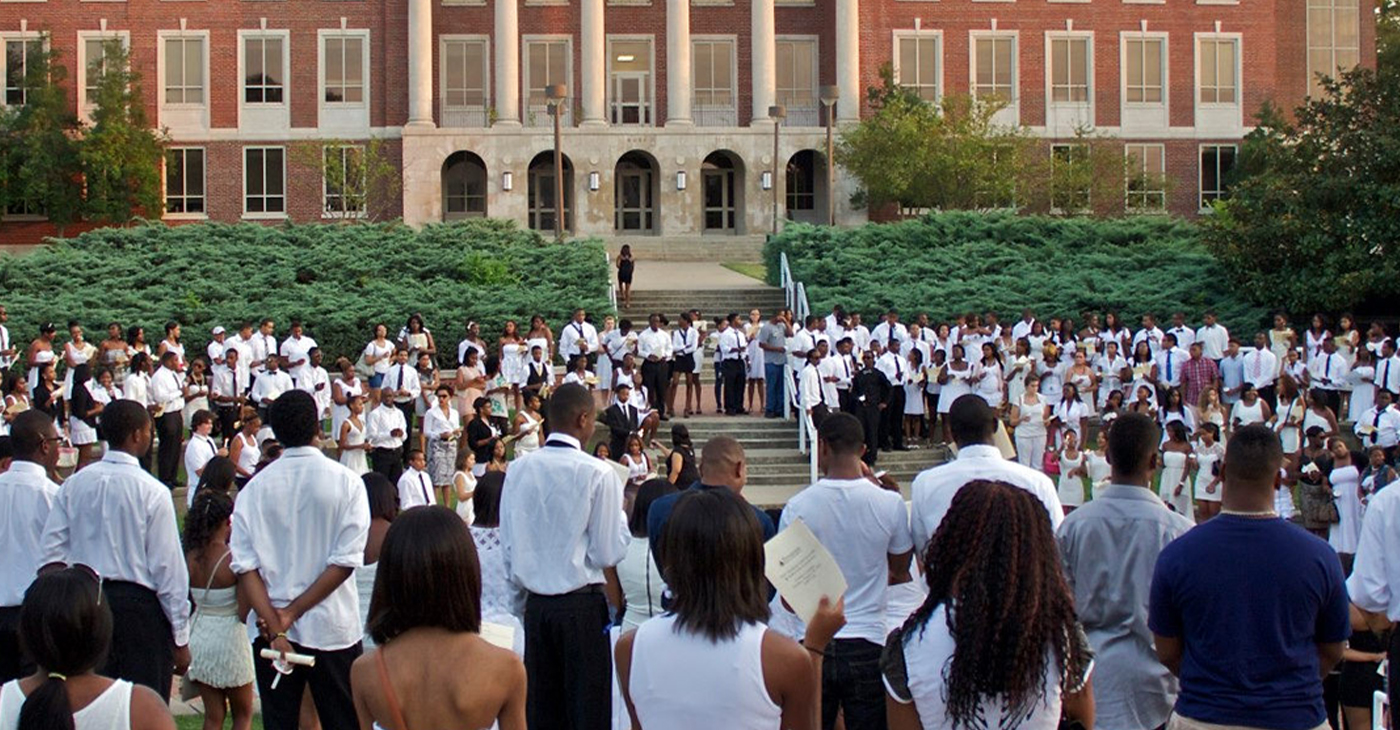
By Stacy M. Brown, NNPA Newswire Senior National Correspondent
@StacyBrownMedia
Tennessee State University (TSU), the state’s only public historically Black college and university (HBCU), faces a tumultuous future as Gov. Bill Lee dissolved its board, a move supported by racist conservatives and MAGA Republicans in the Tennessee General Assembly, who follow the lead of the twice-impeached, four-times indicted, alleged sexual predator former President Donald Trump. Educators and others have denounced the move as an attack on diversity, equity, and inclusion (DE&I) and a grave setback for higher education.
Critics argue that TSU’s purported financial mismanagement is a manufactured crisis rooted in decades of underinvestment by the state government. They’ve noted that it continues a trend by conservatives and the racist MAGA movement to eliminate opportunities for Blacks in education, corporate America, and the public sector.
Gevin Reynolds, a former speechwriter for Vice President Kamala Harris, emphasizes in an op-ed that TSU’s financial difficulties are not the result of university leadership because a recent audit found no evidence of fraud or malfeasance.
Reynolds noted that the disbanding of TSU’s board is not an isolated incident but part of a broader assault on DE&I initiatives nationwide. Ten states, including Tennessee, have enacted laws banning DE&I policies on college campuses, while governors appointing MAGA loyalists to university trustee positions further undermine efforts to promote inclusivity and equality.
Moreover, recent legislative actions in Tennessee, such as repealing police reform measures enacted after the killing of Tyre Nichols, underscore a troubling trend of undermining local control and perpetuating racist agendas. The new law preventing local governments from restricting police officers’ authority disregards community efforts to address systemic issues of police violence and racial profiling.
The actions echo historical efforts to suppress Black progress, reminiscent of the violent backlash against gains made during the Reconstruction era. President Joe Biden warned during an appearance in New York last month that Trump desires to bring the nation back to the 18th and 19th centuries – in other words, to see, among other things, African Americans back in the chains of slavery, women subservient to men without any say over their bodies, and all voting rights restricted to white men.
The parallels are stark, with white supremacist ideologies used to justify attacks on Black institutions and disenfranchise marginalized communities, Reynolds argued.
In response to these challenges, advocates stress the urgency of collective action to defend democracy and combat systemic racism. Understanding that attacks on institutions like TSU are symptomatic of broader threats to democratic norms, they call for increased civic engagement and voting at all levels of government.
The actions of people dedicated to upholding the principles of inclusivity, equity, and justice for all will determine the outcome of the ongoing fight for democracy, Reynolds noted. “We are in a war for our democracy, one whose outcome will be determined by every line on every ballot at every precinct,” he stated.
The post Tennessee State University Board Disbanded by MAGA Loyalists as Assault on DE&I Continues first appeared on BlackPressUSA.
#NNPA BlackPress
Braxton Haulcy and the Expansion of Walker|West Music Academy
May 24, 2023 – Walker West Music Academy gets an early start on expansion. Join us for a Wednesday episode of The …
The post Braxton Haulcy and the Expansion of Walker|West Music Academy first appeared on BlackPressUSA.

May 24, 2023 – Walker West Music Academy gets an early start on expansion. Join us for a Wednesday episode of The …
The post Braxton Haulcy and the Expansion of Walker|West Music Academy first appeared on BlackPressUSA.
-

 Activism4 weeks ago
Activism4 weeks agoOakland Post: Week of March 27 – April 2, 2024
-

 #NNPA BlackPress4 weeks ago
#NNPA BlackPress4 weeks agoBeloved Actor and Activist Louis Cameron Gossett Jr. Dies at 87
-

 Community1 week ago
Community1 week agoFinancial Assistance Bill for Descendants of Enslaved Persons to Help Them Purchase, Own, or Maintain a Home
-

 Activism3 weeks ago
Activism3 weeks agoOakland Post: Week of April 3 – 6, 2024
-

 Business1 week ago
Business1 week agoV.P. Kamala Harris: Americans With Criminal Records Will Soon Be Eligible for SBA Loans
-

 Activism2 weeks ago
Activism2 weeks agoOakland Post: Week of April 10 – 16, 2024
-

 Community1 week ago
Community1 week agoAG Bonta Says Oakland School Leaders Should Comply with State Laws to Avoid ‘Disparate Harm’ When Closing or Merging Schools
-

 Community6 days ago
Community6 days agoOakland WNBA Player to be Inducted Into Hall of Fame

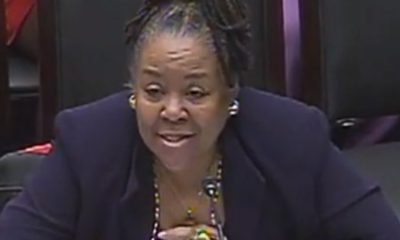

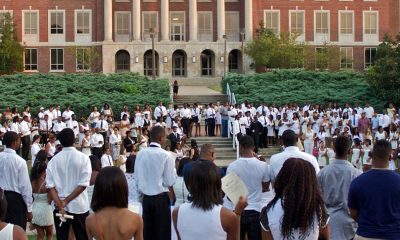





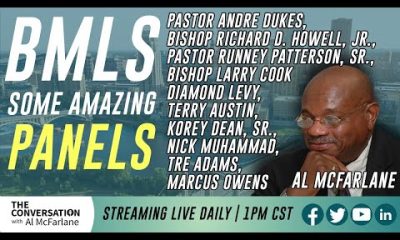

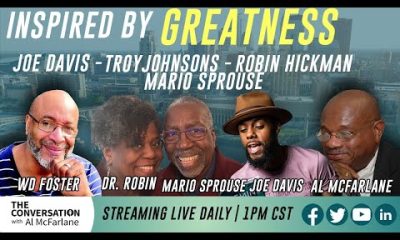















































Pingback: Panafricanmedia Networks